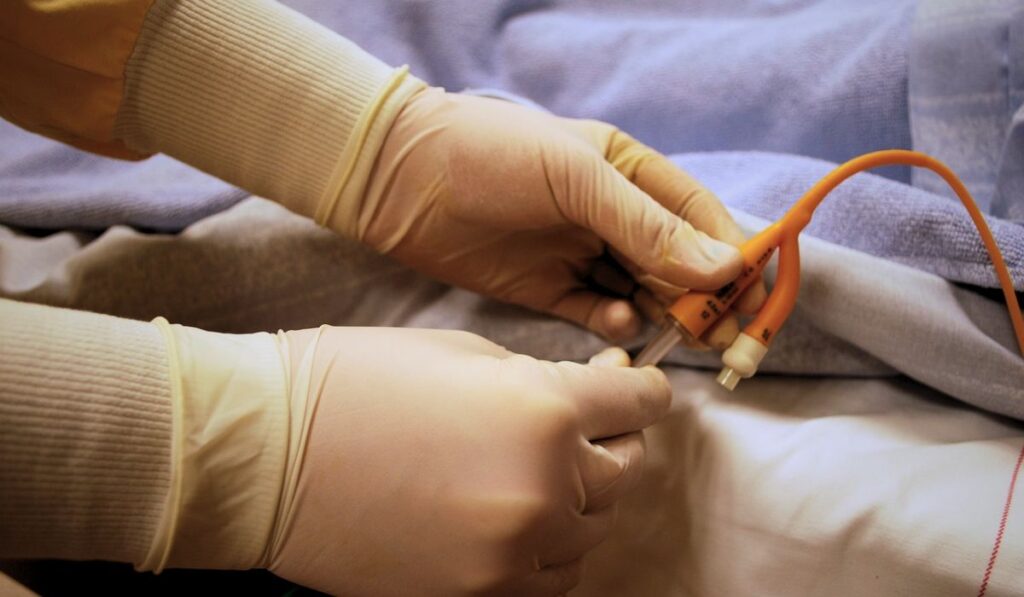In the ever-evolving world of medical care, innovation is at the forefront of enhancing patient experience and improving outcomes. As we continue to push boundaries in healthcare, the emphasis on detail, no matter how small, becomes more pronounced. One such detail, often overlooked yet pivotal, lies in the securement of medical devices used in patient care. It’s here that products such as securement devices play a critical role.
Reliable securement not only ensures the efficacy of medical treatments but also substantially reduces the risk of potential complications, providing a safer environment for both patients and healthcare providers. Let’s delve deeper into this PICC statlock topic by focusing on a particular securement device that has revolutionized patient care.
The Essentials of PICC Lines
Before diving into the specifics of securement, it’s crucial to understand the foundation: the Peripherally Inserted Central Catheter, commonly known as the PICC line. A PICC line is a long, slender tube introduced into a vein in the arm and passed through to the larger veins near the heart. It’s often used for long-term treatment like chemotherapy, prolonged antibiotic treatment, or total parenteral nutrition.
Challenges with PICC Lines
While PICC lines are incredibly beneficial, they also come with challenges. One of the primary concerns is the potential for the line to move or get dislodged. Movement can compromise the treatment, lead to infections, or even result in injury. The securement of the PICC line, therefore, becomes paramount.
Enter PICC StatLock
Traditional methods of securing PICC lines involved the use of tapes or sutures. However, these could cause skin irritation, allergic reactions, or be a source of discomfort. That’s where the Picc Stat Lock comes into play. This innovative device offers an adhesive-free anchor system, ensuring that the PICC line remains securely in place without the drawbacks of traditional methods.

Benefits:
- Reduced Risk of Infection: With no need for sutures, the chances of needlestick injuries are minimized, reducing the risk of infections.
- Improved Comfort: The Picc Stat Lock is designed to reduce the pull on the catheter, offering greater comfort to the patient.
- Enhanced Durability: Unlike tapes that might lose their adhesive power, this device provides a consistent and durable securement.
- Ease of Use: Healthcare providers find it user-friendly, ensuring a swift and efficient process.
A Leap in Safety Standards
Embracing the Picc Stat Lock means elevating the safety standards in healthcare settings. Traditional securement methods presented unforeseen complications, often causing distress for patients. The introduction of this innovative device is a testament to the medical community’s commitment to safer, more efficient, and patient-centric solutions, ushering in a new era of care.
The Bigger Picture: Patient Experience
Medical procedures, even those as seemingly straightforward as inserting a PICC line, can be daunting for patients. The assurance that a device like Picc Stat Lock offers can significantly elevate the patient’s overall experience. It ensures that the treatment administered through the PICC line is unhindered, increasing the chances of positive outcomes. Additionally, by minimizing complications, recovery timelines can be shortened, leading to reduced hospital stays and overall healthcare costs.
Anchoring Trust: The Evolution of Patient Care
The world of healthcare is intricate, and every piece of the puzzle, no matter how tiny, holds significance. Securement devices, particularly the Picc Stat Lock, underscore the importance of this detail-oriented approach. By ensuring that medical devices like PICC lines remain securely in place, they pave the way for effective treatments, reduced complications, and an overall enhanced patient experience. As we continue to advance in medicine, it’s these foundational elements that will continue to play a pivotal role in the overarching narrative of patient care.
Disclaimer: The contents of this website are for educational purposes and are not intended to offer personal medical advice. You should seek the advice of your physician or other qualified health provider with any questions you may have regarding a medical condition. Never disregard professional medical advice or delay in seeking it because of something you have read on this website. The Nutrition Source does not recommend or endorse any products.
